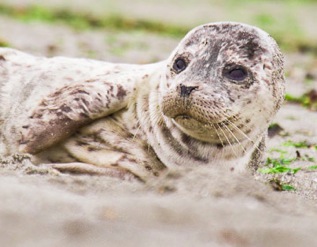Common Dolphon Necropsy- An Interns Experience
Common Dolphins, also refereed to as Saddleback Dolphins, are one of many cetaceans that inhabit coastal New England. Cetaceans are streamlined and typically have a dorsal fin on the center of their back. They do not posses external ear flaps or hair. Common Dolphins are a part of the family Delphinidae, the largest cetacean family. They range from Pacific Ocean to the North Atlantic in pelagic and coastal waters. Often traveling in large schools, Common Dolphins are one of the species that mass strand. In February and March 2012, 214 Common Dolphins were stranded in Cape Cod in what was one of the largest mass strandings to date.

On Sunday, June 9th NMLC received a called from the International Fund for Animal Welfare for an extra hands to come help at their Common Dolphin necropsy that afternoon. Myself and another intern, Becky, went to help out. There were three additional interns there from different facilities in the area as well. Each of us were assigned various jobs such as record keeping and photography.
I recently graduated from Texas A&M University at Galveston with a degree in Marine Biology. Some of the related classes I took were natural history or vertebrates and biology of marine mammals. Even though I received a great education from these classes and more, the necropsy was on a whole new level of learning about the anatomy and physiology of a marine mammal. It was such a great learning experience that I hope each biologist gets to experience.
What To Do If You See a Stranded or Dead Marine Animal

It is very important that you do not touch to push it back into the water or untangle it. Stay a safe distance (at least 150 feet) from it and call the local Marine Animal Stranding Network organization. For additional suggestions, click here. Thank you!
